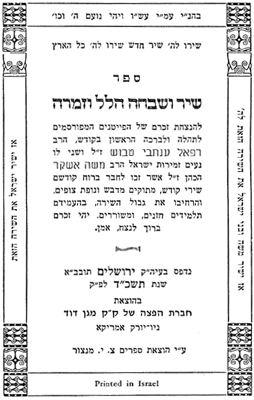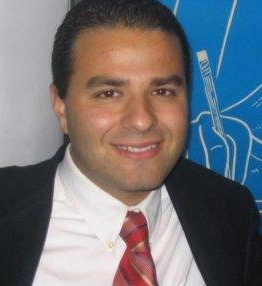

April 27, 2024 ~ PESAH. SIGAH/AJAM/BAYAT.


ב״ה בהנ״ו עמ״י עש״ו
ויהי נעם אדני אלהינו עלינו ומעשה ידינו כוננה עלינו ומעשה ידינו כוננהו
ובכן ישתבח שמך לעד מלכנו
האל המלך הגדול
והקדוש בשמים ובארץ
כי לך נאה ה׳ אלהינו ואלהי אבותינו לעולם ועד
שיר ושבחה הלל
וזמרה
עז וממשלה נצח גדולה גבורה תהלה תפארת קדושה ומלכות
ברכות והודאות לשמך הגדול
והקדוש מעולם ועד עולם אתה אל
For at
least a thousand years, since before the days of the Mahzor Aram Soba (1527,
1560), and before that in Spain, praising God through poetry, namely
"piyyut," and song, namely "pizmonim," has become a major foundation for
Middle Eastern Jews in how they approach worship.
GREAT
When I first met my great grandfather, Gabriel A Shrem, he exclaimed
"You made me GREAT!" As his first great grandchild, born at the tail-end
of his lifetime, I, indeed, elevated his status into a "great"
grandfather. Daddy Gabe, as we referred to him, was a constant presence
in my life, even after he passed away. I was brought up in his shadow by
the members of his family, in his house, on his street, in his synagogue
(Bnai Yosef Congregation), by his student (H Mordekhai Nadaf
at Yeshivah of Flatbush), using his prayer books
(Beit Yosef VeOhel Abraham), his pizmonim book (Shir Ushbaha Hallel
VeZimrah), and listening to his Hazzanut tape recordings on a nightly
basis during my formative years. From an early age, I became his biggest
fan and understood that my sole responsibility in life was to make him
"great."
THE CD PROJECT
The Sephardic Pizmonim Project was founded in 2002 with
the digitalization of the Gabriel A Shrem YU tape cassettes by my great
uncle Al Heffez and I. These tape cassettes, which were introduced to me
by my Grandmother, Florence Shrem Zeitouni, served as the official
curriculum of the Sephardic Hazzanut class at Yeshiva University
Cantorial Institute in the 1970s. They included more than 300 pizmonim,
classified by Maqam, from the Syrian Sephardic Jewish hymn book, "Shir
U'Shbaha Hallel VeZimrah" (1964); the book created by Cantor Shrem,
published by what is now known as the Sephardic Heritage Foundation,
under the leadership of Sam Catton. After two long years of tedious hard
work with numerous volunteers, the "Gabriel A Shrem Pizmonim CD" project
was officially a reality; cementing more than 300 pizmonim into the
collective memories of our people.
WEBSITE
After finishing the CD project
in 2004, it pained me to see that there were over 300 remaining pizmonim
texts in our collection that had no melody recordings to them, which
meant that without intervention of obtaining recordings, their melodies
would be forgotten and be headed towards extinction in the
near future.
From that point forward, I committed to spending my remaining time to
continue Cantor Shrem's mission, and forward the effort to preserve the
remaining 300 pizmonim of our Red Book as well as Sephardic pizmonim
from other sources. I took this mission very seriously and put this
initiative on the top of my priority list. Using the Index of the Red
Pizmonim Book, I organized a full "Preservation Checklist" of all the
songs that we were missing recordings for and went from Hazzan to
Hazzan
throughout the community with this checklist and a digital recorder. In
late 2004, this website, pizmonim.org
(as well as pizmonim.com; courtesy of
Erol Dusi), was created by Rabbi Dr Ricky
Hidary of Merkaz, and designed by Sam Franco and
Charlie A Shrem, in
order to facilitate our efforts in sharing our archives with the public
for free.
THE CHECKLIST
One of the first volunteers to record the "missing"
pizmonim was Isaac J Cabasso, one of Gabriel A Shrem's colleagues, and
cantor of Congregation Beth Torah in Brooklyn, NY. Over the course of
ten years (2004-2014), Cantor Cabasso, recorded more than 200 pizmonim
for the website. Over the course of these years, many other individuals
from around the world have contacted the project and have made
significant recording and other contributions. In addition, many
individuals, namely Joseph Mosseri, Morris Arking, Mickey Kairey, Rosy
Hamaoui, Moe Tawil, Menahem Mustacci, Ezra Zayat, Uri Amram, and
Ezra
Ashkenazi, provided me with access to their private
pre-existing tape collections.
At
this point, we are currently down to the last 60 missing songs in our
"Shir Ushbaha Hallel VeZimrah" pizmonim book.
In addition to the Red Pizmonim Book, over the course of these ten
years, many other recordings and documents of liturgical importance,
such as the Torah (by Abe Zami and Mickey Kairey
A"H), Haftarah (Mickey
Kairey), Tehillim (H Barukh Ben Haim A"H and Max E Tawil
A"H), Megillot
(Joseph "Susu" Hamaoui A"H, H Barukh Ben Haim A"H, and Max E Tawil),
various Maqam calendars, and Hazzanut notes (H Moshe Ashear and
Gabriel A Shrem A"H), in general, have been added to the website in order to
become a complete comprehensive guide for the studies of all students
and visitors. Many copies of manuscripts from nineteenth century Aleppo
have been acquired from Israeli institutions with the help of Alberto
Attia in order to provide commentary and historical background of each
pizmon.
CONCLUSION
As a person who has lived away from the Syrian community
for a few years in pursuit of a professional career, this great website
provided me with an excellent avenue to maintain my connection to
the Syrian Jewish heritage; accomplishing my life goal of making
Gabriel A Shrem "great." It is my deepest hope that this great
website is used as a tool throughout the world to reconnect with this
great heritage of Syrian
Jewry. We hope that this endeavor promotes a deeper appreciation of
pizmonim and enhances your experiences during the Shabbat prayers.

David Matouk Betesh DMD - דויד מעתוק בטיש הלוי
NOW KNOWN AS DMB